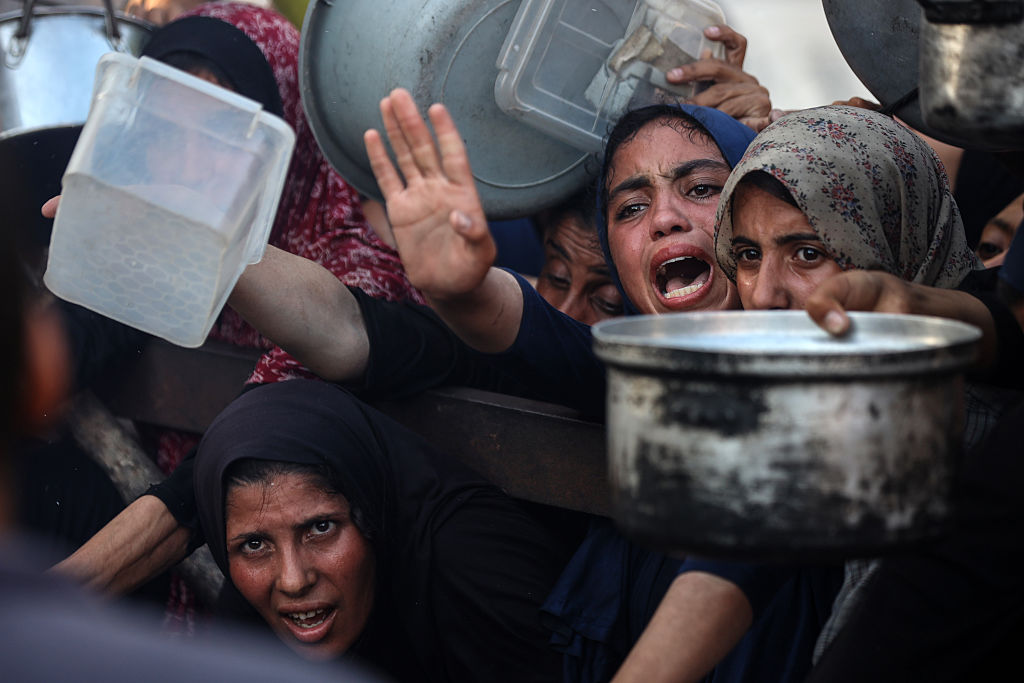It has been 40 years since two Live Aid concerts in London and Philadelphia transformed the debate about global poverty. An estimated 2 billion people in 150 countries watched the concerts. Policymakers were spurred to action and $125 million was raised for the fight against famine.
[time-brightcove not-tgx=”true”]
The drive to save lives cannot be relegated to historical oddity. The painful truth is that today, hunger is on the rise—however funding to address this crisis is being cut, rather than rallied together. The United States is the only country prepared to step up.
Acute child malnutrition—which scientists call “wasting”—is a global humanitarian catastrophe in the making. Around the world, 45 million children suffer from this disease at any one time. And in places where wasting is widespread, other painful side effects are occurring: conflict is intensifying; poverty is deepening; public health systems are buckling under pressure; domestic violence is rife. And children, our most vulnerable, suffer the most acutely.
The numbers affected by acute malnutrition are likely to rise, led by threatened famines in active war zones like Sudan and Gaza. What is more, in these conflict settings, where health centers are inaccessible, an overwhelming majority of acutely malnourished children do not receive the treatment they need.
Beyond that, the combination of armed conflict, climate disruption, a debt tourniquet on low-income countries, and cuts in humanitarian aid from some of the world’s leading donors, makes the global malnutrition crisis a double tragedy: it is both vast and under-addressed.
Read More: $25 Butter and $40 Eggs: The Search for Food in Gaza
The International Rescue Committee (IRC) estimates that 18 million children living in humanitarian crises are suffering from acute malnutrition at any given time in the communities we serve. Therefore, we can gauge that hundreds of millions of cases of severe wasting occur globally over the course of a year.
The United States has long been a leader in supporting child survival, and a cornerstone of the global nutrition effort. The U.S. is estimated to fund about 35% to 40% of the total global aid effort. The Trump Administration is right to say others should do more, but making cuts before they do so has an immediate impact on the lives of the world’s most vulnerable.
International investment does more than buy food. It supports the delivery of ready-to-use therapeutic food, a highly effective peanut paste that can restore children to health in a matter of weeks. It funds community health workers, who reach families in the most remote and dangerous settings. It helps maintain the front lines of care in places where health systems are barely functioning.
The IRC has been proud to partner with U.S. agencies in delivering proven, cost-effective malnutrition treatments. In FY2024, U.S. government funding accounted for more than 25% of the International Rescue Committee’s $57 million in nutrition programming across 22 crisis-affected countries.
But that partnership is now under threat. The administration’s January 2025 stop work orders sent shockwaves through the humanitarian community. Though temporary waivers allowed some critical programs to continue, they confirmed how fragile the lifeline has become. And a more dangerous test lies ahead: starting over the next few months, U.S.-funded nutrition grants will expire. If they are not renewed, the consequences will be immediate and devastating. There is no other donor or government ready to step into the gap left by the U.S. at scale.
Read More: At Least 20 Palestinians Killed in Stampede at Gaza Aid Distribution Site
The IRC projects that cuts already announced to our programs mean that 43,000 fewer children will receive treatment in FY2025 than originally planned—a drop from nearly 472,000 to just under 429,000. If grant renewals do not come through, that figure would rise to 150,000 children left untreated in FY2026. And these are the figures of just one organization, representing just 3% of the total humanitarian budget.
The U.S. has also played a critical role in primary health care in crisis-affected settings. Many children presenting with wasting are suffering complications from entirely treatable conditions—diarrhea, pneumonia, or missed immunizations. If basic health systems collapse at the same time nutrition programs are cut, the ability to find and treat these children early will disappear.
The tragedy is not only that children are dying. It’s that we know how to save them, and we can do it more efficiently than ever before. IRC-led pilots in multiple countries have shown that simplified treatment protocols, delivered by community health workers, using a color-coded arm band to diagnose wasting, can achieve recovery rates of over 90%, while reducing costs by 20–30%—an innovation the U.S. government helped pioneer.
Lives should not be cheap, but these interventions are. A course of treatment for moderate acute malnutrition costs between $60 and $73 per child. For severe acute malnutrition, when complications set in, the costs go up, but still remain incredibly low for the life-saving gain the interventions represent.
The United States has not merely funded the fight against malnutrition—it has helped shape the future of the global response. That is a legacy to be proud of. It is also one that must not be abandoned. If Congress and the administration act now to renew key nutrition grants, the U.S. can avert a humanitarian disaster and catalyze a more integrated, cost-effective system that reaches more children in more places. If it does not, we risk the lives of hundreds of thousands of children.
A funding cliff is coming. The Trump Administration has said it is committed to protecting life-saving humanitarian aid. This is the test to do so.

